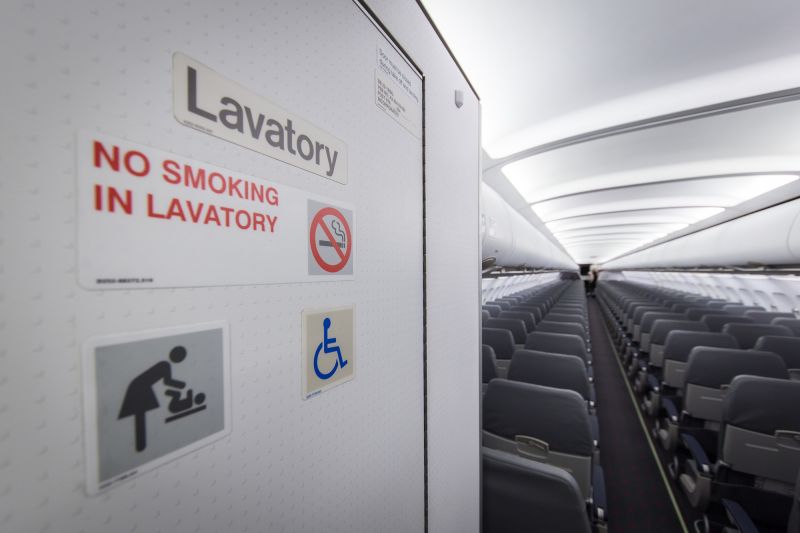
Future airplanes must meet stricter accessibility standards, but not for years
Manufacturers and airlines now have more than a decade to make bathrooms large enough for wheelchair users on the most common type of airliners under a new Department of Transportation rule issued on Wednesday.
The rule applies only to new single-aisle planes delivered 12 years from now. It does not require retrofitting existing planes with a larger bathroom.
That means the expanded bathrooms could take years to become commonplace on single-aisle jets.
Boeing aspires to make its bestselling plane, the single-aisle 737 MAX, at a rate of 50 per year.
The four major US airlines have hundreds of active planes in their fleets, and the average age of the aircraft at each carrier ranges between 12 and 16 years.
Lavatory requirements
The DOT notes that accessible lavatories have long been required on twin-aisle aircraft.
The larger lavatory on single-aisle planes must be large enough for a disabled person and an aide “to approach, enter, maneuver within as necessary to use all lavatory facilities, and leave.”
Airlines and manufacturers must meet other milestones for lavatories in the interim.
Starting three years from now, jnew planes delivered must come with grab bars and other accessible features, as well as a “visual barrier for privacy.”
Airlines also have three years to improve the features for onboard wheelchairs, improve crew training and update accessibility markings.
Earlier this month, Transportation Secretary Pete Buttigieg said that the new rule “will make airplane bathrooms larger and more accessible, ensuring travelers in wheelchairs are afforded the same access and dignity as the rest of the traveling public.”
The Biden administration said it is also working on other changes to make airplanes more handicap accessible.
